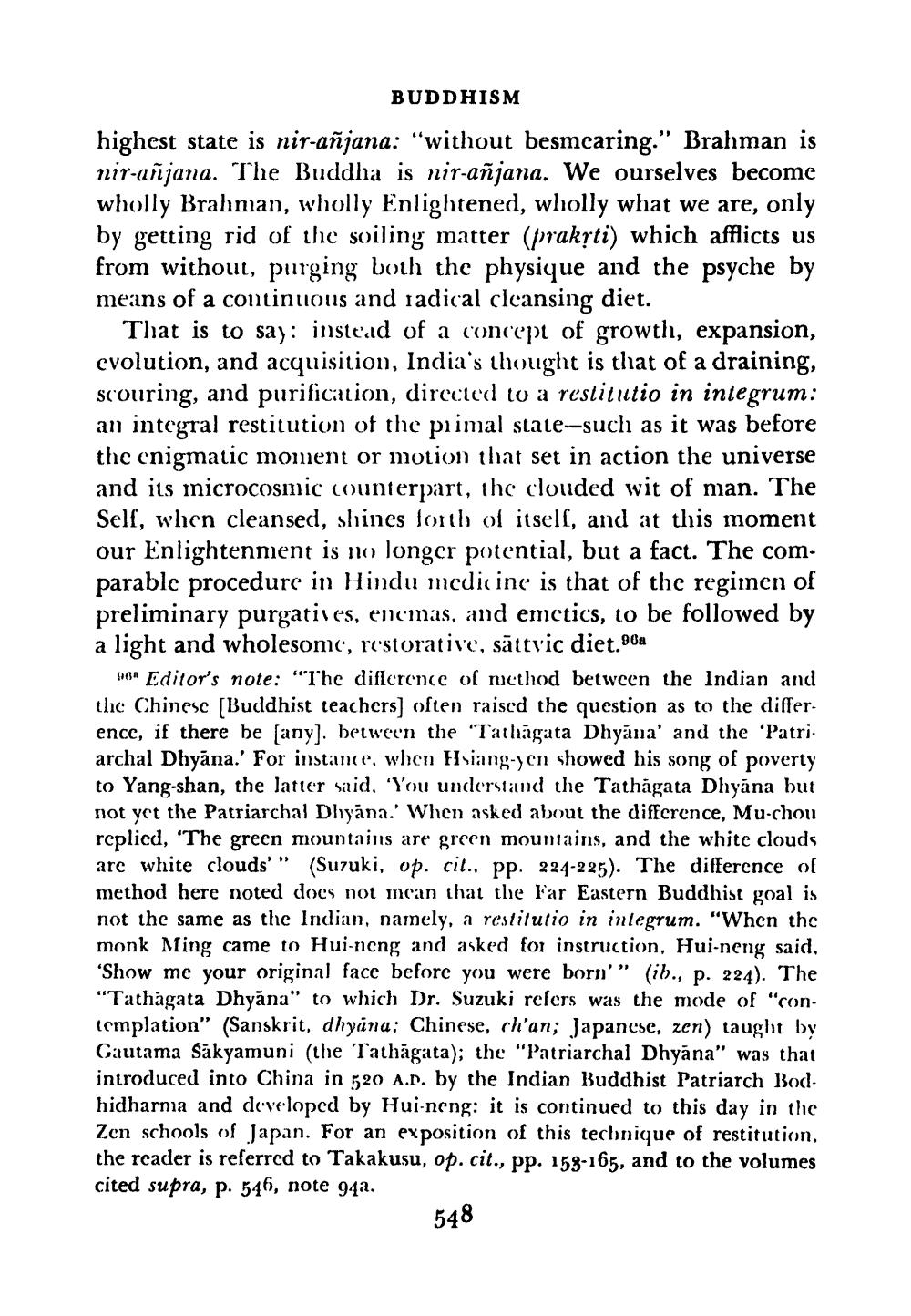________________
BUDDHISM
highest state is nir-añjana: "without besmcaring." Brahman is nir-añjana. The Buddha is nir-añjana. We ourselves become wholly Brahman, wholly Enlightened, wholly what we are, only by getting rid of the soiling matter (praksti) which afflicts us from without, purging both the physique and the psyche by means of a continuous and radical cleansing diet.
That is to say: instead of a concept of growth, expansion, evolution, and acquisition, India's thought is that of a draining, scouring, and purification, directed to a restitutio in integrum: an integral restitution of the primal state--such as it was before the enigmatic moment or motion that set in action the universe and its microcosmic counterpart, the clouded wit of man. The Sell, when cleansed, shines fonth of itself, and at this moment our Enlightenment is no longer potential, but a fact. The comparable procedure in Hindu medicine is that of the regimen of preliminary purgatives, enemas, and emetics, to be followed by a light and wholesome, restorative, sāttvic diet.964
on Editor's note: "The diflcrence of method between the Indian and the Chinese Buddhist teachers often raised the question as to the difference, if there be fanyl between the 'Tathāgata Dhyana' and the 'Patri. archal Dhyāna.' For instance, when Hsiang-) en showed his song of poverty to Yang-shan, the latter said, 'You understand the Tathagata Dhyana but not yet the Patriarchal Dhyāna.' When asked about the difference, Mu-chou replicd, 'The green mountains are green mountains, and the white clouds are white clouds'" (Suzuki, op. cit., pp. 224-225). The difference of method here noted does not mean that the Far Eastern Buddhist goal is not the same as the Indian, namely, a restitutio in integrum. "When the monk Ming came to Hui-ncng and asked for instruction, Hui-neng said, 'Show me your original face before you were born'" (ib., p. 224). The "Tathagata Dhyāna" to which Dr. Suzuki refers was the mode of "contemplation" (Sanskrit, dhyana: Chinese, ch'an; Japanese, zen) taught by Gautama Säkyamuni (the Tathāgata); the "Patriarchal Dhyāna" was that introduced into China in 520 A.D. by the Indian Buddhist Patriarch Bodhidharma and developed by Hui-neng: it is continued to this day in the Zen schools of Japan. For an exposition of this technique of restitution, the reader is referred to Takakusu, op. cit., pp. 159-165, and to the volumes cited supra, p. 546, note 94a.
548




